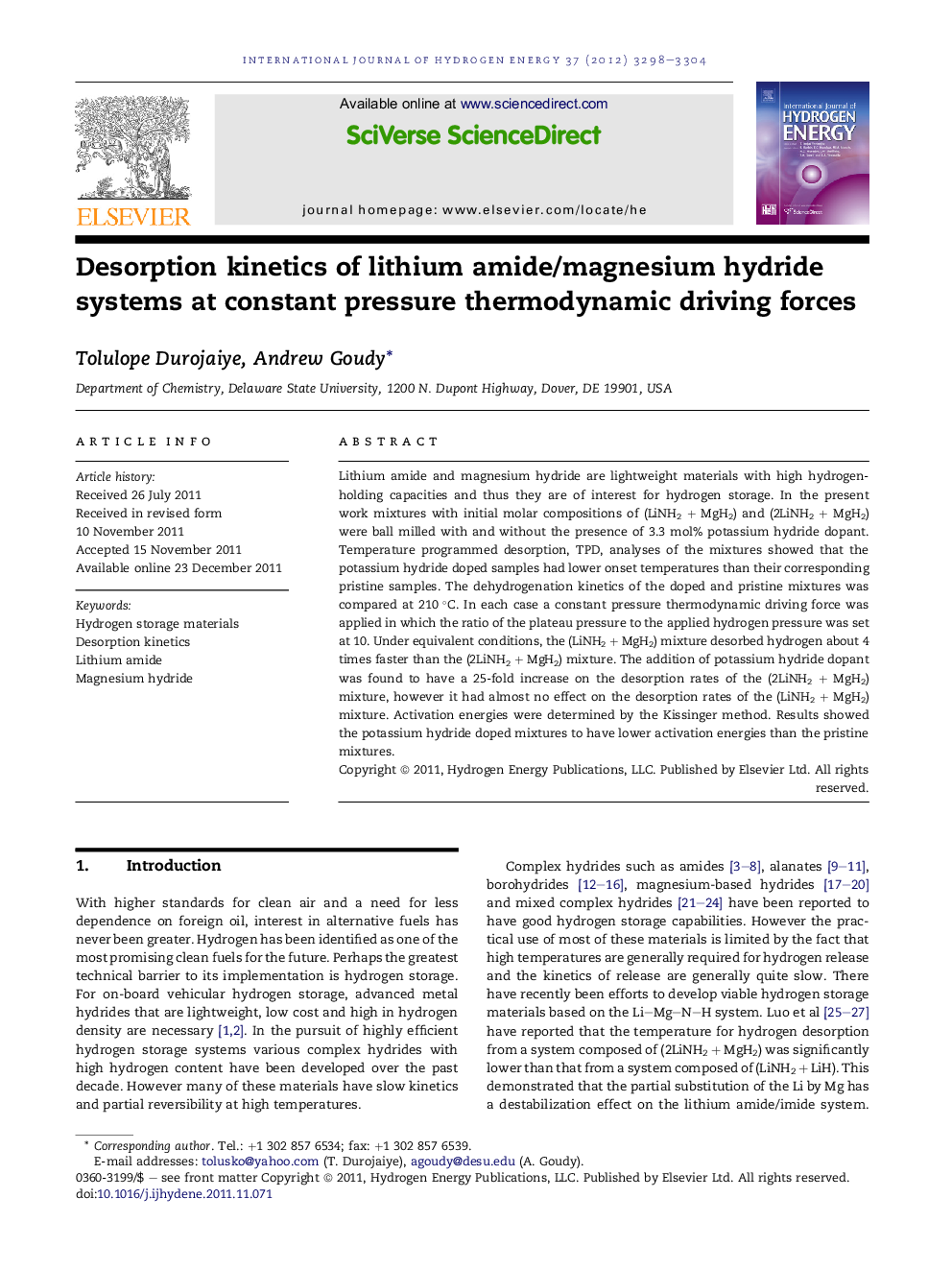| Article ID | Journal | Published Year | Pages | File Type |
|---|---|---|---|---|
| 1282336 | International Journal of Hydrogen Energy | 2012 | 7 Pages |
Lithium amide and magnesium hydride are lightweight materials with high hydrogen-holding capacities and thus they are of interest for hydrogen storage. In the present work mixtures with initial molar compositions of (LiNH2 + MgH2) and (2LiNH2 + MgH2) were ball milled with and without the presence of 3.3 mol% potassium hydride dopant. Temperature programmed desorption, TPD, analyses of the mixtures showed that the potassium hydride doped samples had lower onset temperatures than their corresponding pristine samples. The dehydrogenation kinetics of the doped and pristine mixtures was compared at 210 °C. In each case a constant pressure thermodynamic driving force was applied in which the ratio of the plateau pressure to the applied hydrogen pressure was set at 10. Under equivalent conditions, the (LiNH2 + MgH2) mixture desorbed hydrogen about 4 times faster than the (2LiNH2 + MgH2) mixture. The addition of potassium hydride dopant was found to have a 25-fold increase on the desorption rates of the (2LiNH2 + MgH2) mixture, however it had almost no effect on the desorption rates of the (LiNH2 + MgH2) mixture. Activation energies were determined by the Kissinger method. Results showed the potassium hydride doped mixtures to have lower activation energies than the pristine mixtures.
► Kinetic measurements were done using constant pressure thermodynamic forces. ► KH is more effective in increasing hydrogen desorption rates for 2LiNH2 + MgH2. ► KH is more effective in lowering the desorption temperature for 2LiNH2 + MgH2. ► KH appears to change the mechanism for H2 desorption from LiNH2 + MgH2. ► KH doesn’t change the mechanism for desorption from 2LiNH2 + MgH2.
